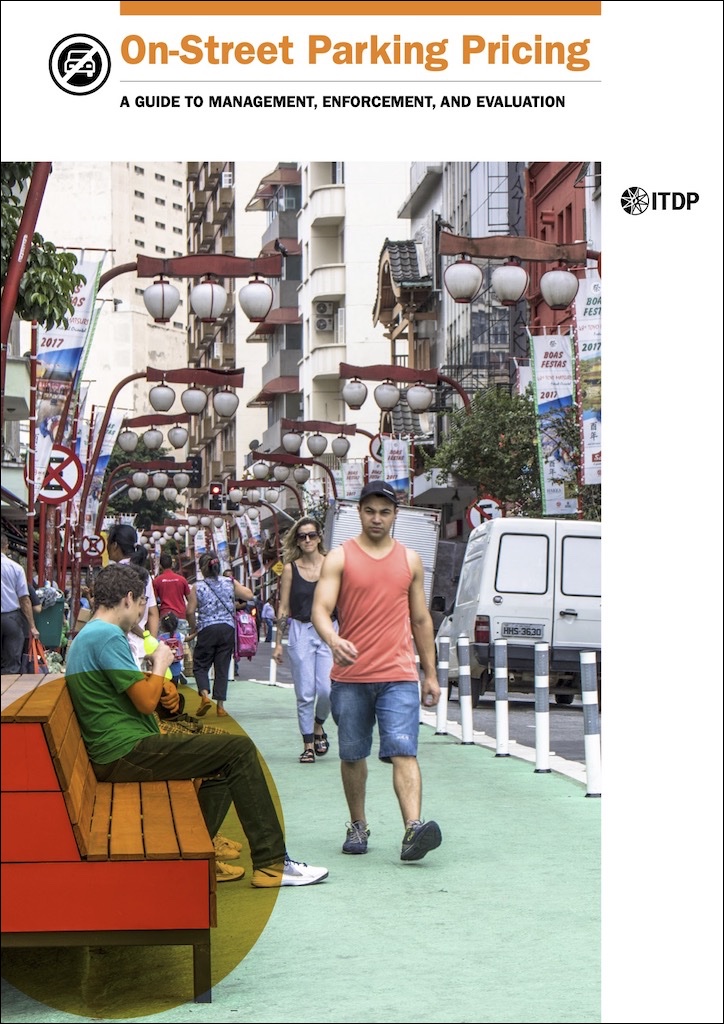The Institute for Transportation & Development Policy (ITDP) has published a free guide to the pricing of on-street parking, aimed at municipal planners.
Parking in cities is not just about vehicle storage: How a city prices—and ultimately manages—parking has direct and indirect effects on how people travel and therefore impacts related issues like congestion, air pollution and emissions, road safety, land use development patterns, and street design. Together, these contribute to the quality and liveability of public space.
ITDP, On-street Parking Pricing Guide
Problems with free parking
Offering free on-street parking creates multiple problems, including traffic congestion, poor air quality, inequity, and unaffordability.
People—particularly drivers—have come to believe that free parking is the optimal scenario, when in fact it is only optimal for the first person who finds a free-of-charge space and it is dysfunctional for everyone else.
ITDP, On-street Parking Pricing Guide
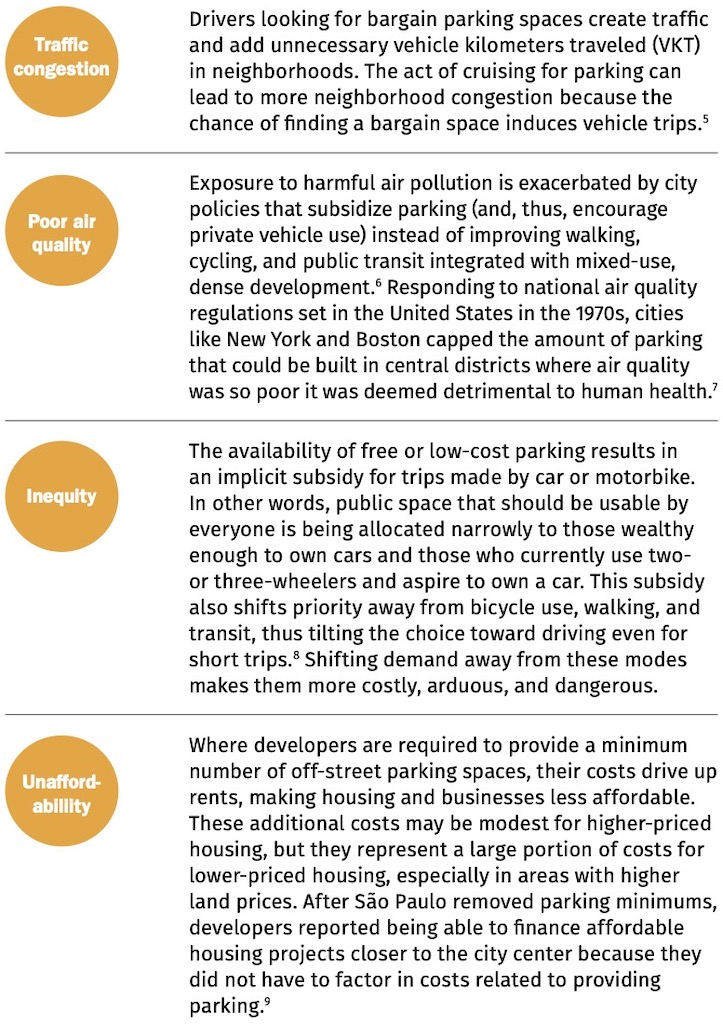
Cities that take action to address long-standing parking management issues now may be able to shift some of the increased demand for vehicles expected in the aftermath of the pandemic to other modes. Parking management that includes pricing enables cities to reallocate space for bus lanes, bicycle lanes, wider sidewalks, and flexible pickup zones—which are also seeing high demand as low-contact, physically distanced solutions— and the revenue from pricing parking can help fund these improvements. High-quality public transport, cycling, and walking infrastructure benefits users of these modes as well as drivers by reducing congestion as demand shifts away from driving.
ITDP, On-street Parking Pricing Guide
Recommendations
The guide offers a series of recommendations, aimed at a holistic approach to managing parking:
Set goals

Manage
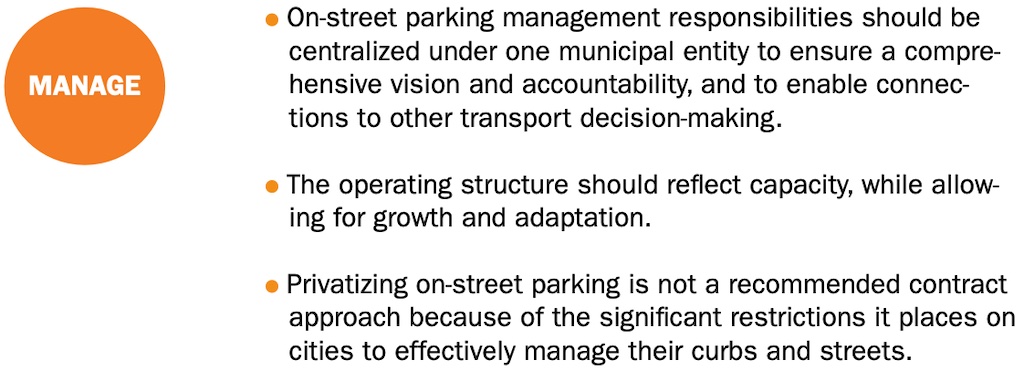
Finance
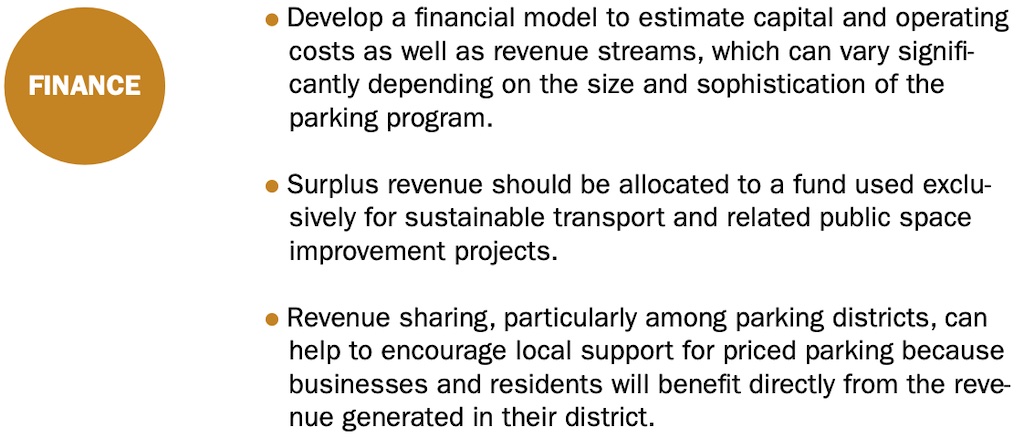
Engage
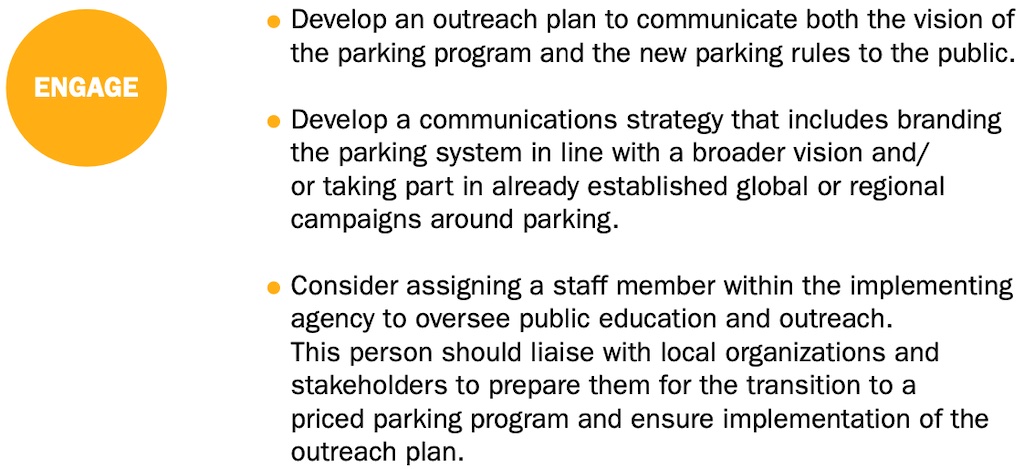
Enforce
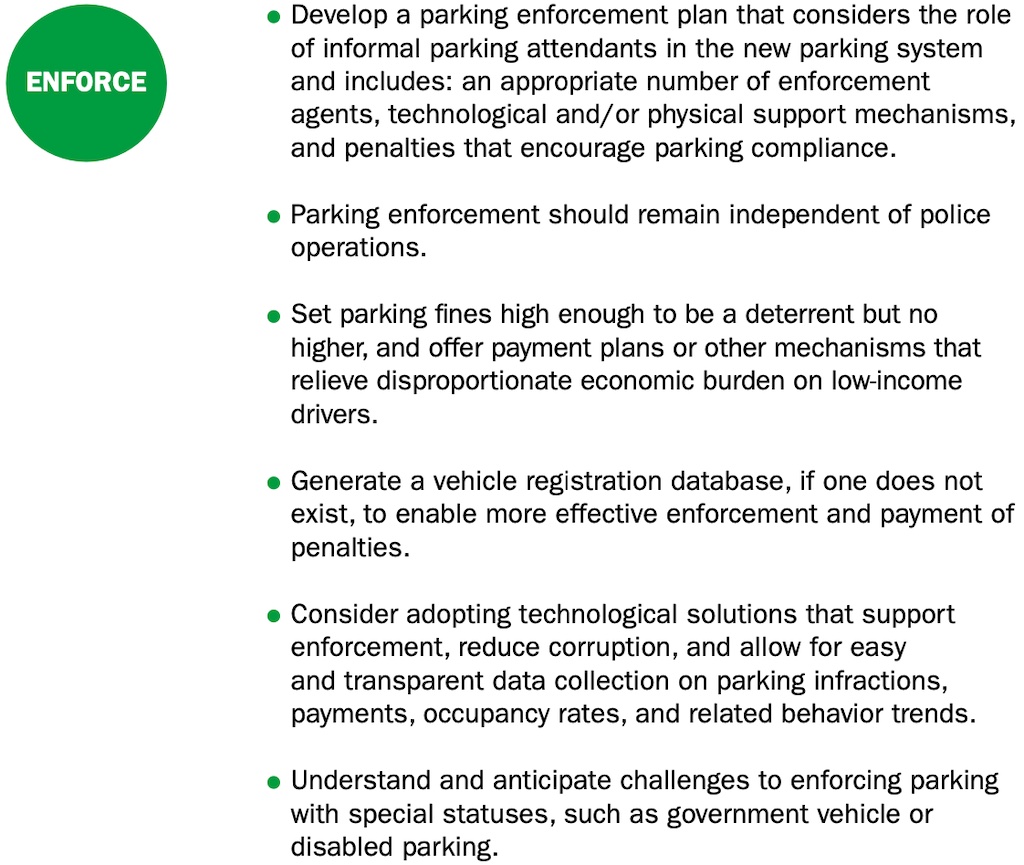
Evaluate

Lessons for Yarra
Pay-by-app solutions can be rolled out much faster and easier than parking meters. Even better, pay-by-app solutions can enable parking meters to be removing, thus freeing up space on footpaths:
Pay-by-phone/mobile app capability has, in some cases, eliminated the need for parking meters: Singapore has never had parking meters, and Tel Aviv and Shenzhen have fully mobile-app-based payment systems.
ITDP, On-street Parking Pricing Guide
Revenue from parking should be allocated to improve infrastructure for walking, biking and public transport, instead of going to consolidated revenue, so it’s perceived to be helping to create alternatives to driving, instead of revenue raising:
if revenues are allocated to a general operating fund, priced parking can be perceived as another tax as opposed to smart transportation management.
ITDP, On-street Parking Pricing Guide
Paris is removing 2/3 of its parking spaces, Yarra can follow this lead:
Paris has an explicit goal of removing private cars from the city center to combat dangerous levels of air pollution. As a result, the city has been removing thousands of on-street car parking spaces and replacing them with public bikeshare stations; bicycle parking; motorbike parking; parking for carshare, electric, and hybrid vehicles; and sidewalk extensions. Building off the 2015–2020 Plan Velo, Paris plans to remove at least 60,000 of its 83,500 on-street spaces downtown and reallocate that space for public uses.
ITDP, On-street Parking Pricing Guide
Conclusion
The free ITDP guide to the pricing of on-street parking offers a cogent description of why and how the City of Yarra should reform how it manages and prices on-street parking. The guide aligns with the recommendations published on our better for parking page, including:
- converting free parking to permit parking,
- managing access by selling digital permits at a range of price levels,
- enforcing parking with automatic number plate recognition, and
- hypothecating revenue toward infrastructure for walking, biking, trees and place making.
We urge councillors and officers to read it, and include its recommendations in the upcoming Transport Action Plan and associated Parking Management Plan.
Published 18th September 2021

